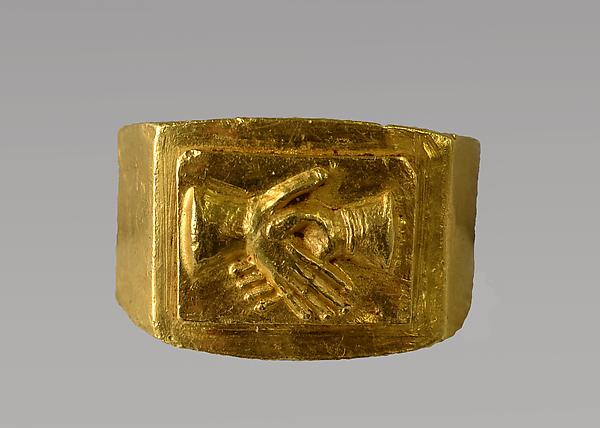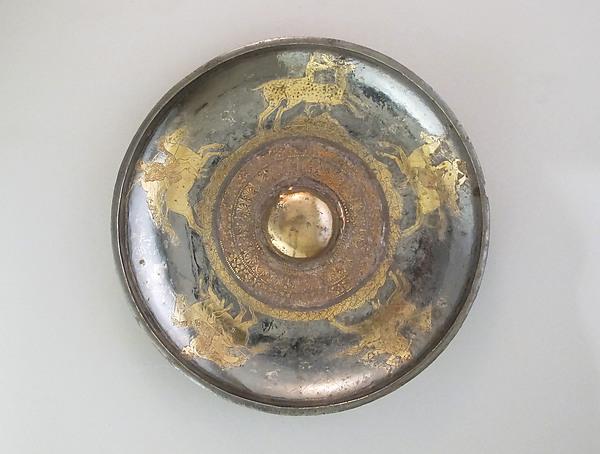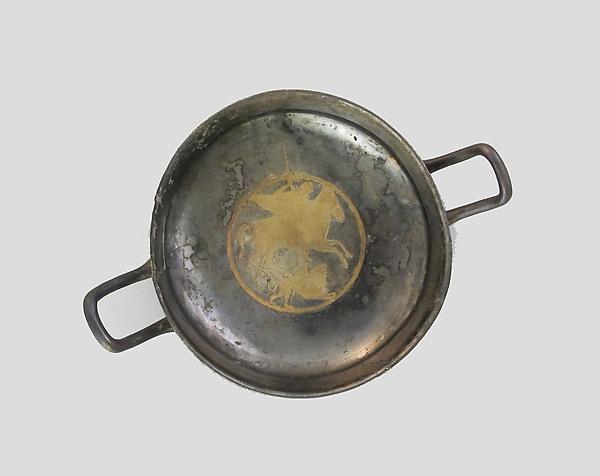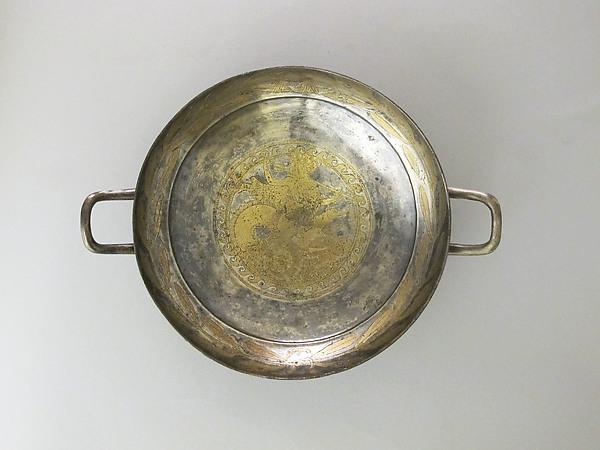2016.239

Object Title
Gold finger ring
Measurements
1/2 × 3/4 in. (1.3 × 1.9 cm) Other (Bezel): 7/16 × 3 1/4 in. (1.2 × 8.3 cm)
Creation Date
3rd century A.D., Late Imperial
Credit Line
Purchase, Patricia and Marietta Fried Gift, 2016
Museum Name
Culture
Country of Origin
Object Type
Materials / Techniques
Object URL
http://www.metmuseum.org/art/collection/search/712072
Provenance Information
Collection of Benjamin Zucker, New York, by 1985; purchased from Mr. Zucker through Les Enluminures by The Metropolitan Museum of Art, 2016.
Exhibition Information
Bedazzled: 5,000 Years of Jewelry, Frist Center for the Visual Arts, Nashville, Tenn. from Sept. 15, 2006, to Jan. 14, 2007; the John and Mable Ringling Museum of Art, Sarasota, Fla. from Feb. 18 to May 13, 2007; Walters Art Museum, October 19, 2008, to January 4, 2009.
Publication Information
Scarisbrick, Diana. 2007. Rings : Jewelry of Power, Love, and Loyalty. no. 81, p. 63, London: Thames and Hudson, London.
Hindman, Sandra, Beatriz Chadour-Sampson, Reine Hadjadj, Mr. Jack Ogden, and Diana Scarisbrick. 2014. Cycles of Life : Rings from the Benjamin Zucker Family Collection, Les Enluminures. no. 9, pp. 74–77, London: Paul Holberton Publishing.
Hindman, Sandra, Beatriz Chadour-Sampson, Reine Hadjadj, Mr. Jack Ogden, and Diana Scarisbrick. 2014. Cycles of Life : Rings from the Benjamin Zucker Family Collection, Les Enluminures. no. 9, pp. 74–77, London: Paul Holberton Publishing.
Section of the AAMD Guidelines relied upon for the exception to 1970
Cumulative facts and circumstances
Explain why the object fits the exception set forth above
This work was placed on deposit at the Walters Art Museum from 1985 to 2013. It was displayed as part of the Walter’s traveling Bedazzled exhibition in 2007/8 and has been published twice. The Metropolitan Museum has some 25 Roman gold finger rings, mostly dated to the early imperial period. There is nothing comparable to this large and impressive Late Roman ring. It is significant not only in terms of its bulk but also for its use as a betrothal or wedding ring—a tradition that only became firmly established in the 3rd century A.D. It is a welcome addition to the Metropolitan Museum’s holdings of ancient jewelry.


